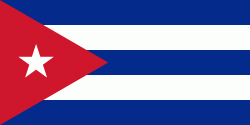Yongxing Island Airport (Yongxing Island Airport)
Yongxing Island Airport, also known as Woody Island Airport, is a civilian-military dual-use airport located on Yongxing (Woody) Island, the largest of the disputed Paracel Islands in the South China Sea. Yongxing/Woody Island is occupied and administered by China (PRC) as the seat of Sansha city of Hainan Province. The airport was expanded in 1990 to increase the combat range of Chinese warplanes. Further construction and reclamation of land commenced in 2012 to lengthen the airstrip. This work was completed in October 2014.
Military drills with fighter aircraft landing and taking off at Yongxing Island Airport were carried out and telecast on CCTV in December 2017.
Yongxing Island Airport has a runway that is 2700 m long, capable of handling any fourth generation fighter aircraft of the Chinese airforce such as the Sukhoi Su-30MK2. The airport has four hangars, a radar navigation station and four large fuel tanks, enabling it to serve as a forward deployment base for refueling warplanes on combat missions. A two storey 3500 sqm terminal building with control tower is found on south side of the runway. It has a domestic arrival and departure areas. The terminal has three gates to handle civil airliners.
Military drills with fighter aircraft landing and taking off at Yongxing Island Airport were carried out and telecast on CCTV in December 2017.
Yongxing Island Airport has a runway that is 2700 m long, capable of handling any fourth generation fighter aircraft of the Chinese airforce such as the Sukhoi Su-30MK2. The airport has four hangars, a radar navigation station and four large fuel tanks, enabling it to serve as a forward deployment base for refueling warplanes on combat missions. A two storey 3500 sqm terminal building with control tower is found on south side of the runway. It has a domestic arrival and departure areas. The terminal has three gates to handle civil airliners.
Map - Yongxing Island Airport (Yongxing Island Airport)
Map
Country - Cuba
 |
 |
| Flag of Cuba | |
The territory that is now Cuba was inhabited by the Ciboney people from the 4th millennium BC with the Guanahatabey and Taíno peoples until Spanish colonization in the 15th century. From the 15th century, it was a colony of Spain, and slavery was abolished in 1886, remaining a Spanish colony until the Spanish–American War of 1898, when Cuba was occupied by the United States and gained independence in 1902. In 1940, Cuba implemented a new constitution, but mounting political unrest culminated in a coup in 1952 and the subsequent dictatorship of Fulgencio Batista, which was later overthrown in January 1959 by the 26th of July Movement during the Cuban Revolution, which afterwards established communist rule under the leadership of Fidel Castro. The country was a point of contention during the Cold War between the Soviet Union and the United States, and a nuclear war nearly broke out during the Cuban Missile Crisis of 1962. Following the collapse of the Soviet Union, Cuba faced a severe economic downturn in the 1990s, known as the Special Period. In 2008, Fidel Castro resigned after 49 years of leadership of Cuba and was replaced by his brother Raúl Castro.
Currency / Language
| ISO | Currency | Symbol | Significant figures |
|---|---|---|---|
| CUC | Cuban convertible peso | $ | 2 |
| CUP | Cuban peso | $ | 2 |
| ISO | Language |
|---|---|
| ES | Spanish language |















